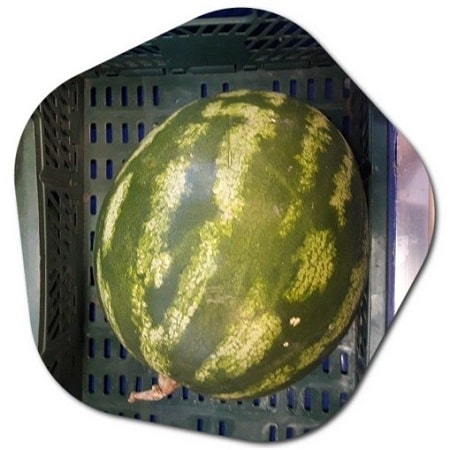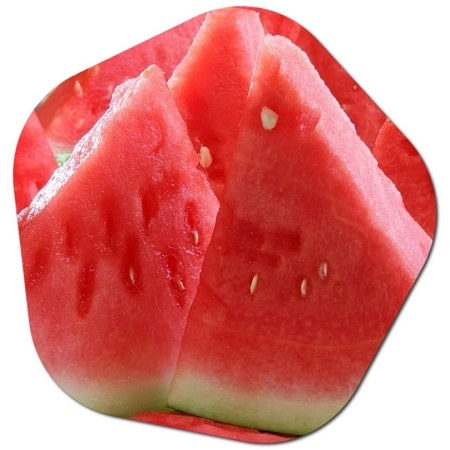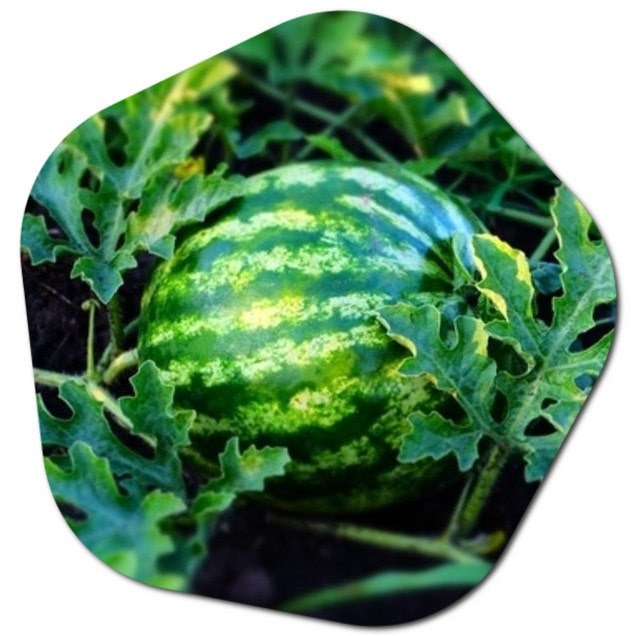Yes, it is possible to grow watermelons in the UK, but it can be challenging due to the country’s climate. Watermelons are warm-weather plants that thrive in hot and sunny conditions, and they require a long growing season to reach maturity.
In the UK, the climate is generally cooler and less predictable, with shorter summers. Therefore, growing watermelons outdoors in the ground might be difficult in many regions. However, there are ways to increase the chances of successfully growing watermelons in the UK:
- Choose the right variety: Opt for varieties specifically bred for cooler climates or shorter growing seasons. Some types are more cold-tolerant than others and may have a better chance of producing fruit in the UK.
- Greenhouses and polytunnels: Using a greenhouse or a polytunnel can create a warmer microclimate, extending the growing season and protecting the watermelon plants from cool temperatures and excessive rainfall.
- Start indoors: You can start watermelon seeds indoors in pots or trays, several weeks before the last expected frost. Once the seedlings are established and the weather has warmed up, you can transplant them outside or into a greenhouse.
- Choose a sunny, sheltered location: If you’re planting outdoors, select a spot that receives as much sun as possible and is protected from strong winds.
- Use black plastic mulch: Placing black plastic mulch around watermelon plants can help warm the soil and retain moisture, which can be beneficial in cooler climates.
- Irrigation: Watermelons need consistent watering, especially during hot and dry periods. Proper irrigation can help ensure their growth and fruit development.
- Use cloches or row covers: These can provide additional protection and warmth for the plants, especially during the early growing stages.

Keep in mind that even with these precautions, growing watermelons in the UK may not yield the same results as in warmer climates. However, with some effort and care, it is still possible to enjoy homegrown watermelons in the UK.
How long does it take to grow a watermelon in the UK?
The time it takes to grow a watermelon in the UK can vary depending on various factors, including the watermelon variety, growing conditions, and the methods used. Generally, it takes around 70 to 90 days from planting to harvest for most watermelon varieties.
However, in the UK’s cooler climate, the growing season might not be long enough for certain watermelon varieties to reach maturity and produce fruit outdoors. As mentioned earlier, choosing cold-tolerant or short-season watermelon varieties can help increase the chances of success.

If you’re starting watermelon seeds indoors and then transplanting seedlings outdoors or into a greenhouse, you may need to add several weeks to the growing timeline to account for the indoor growing period.
Additionally, the use of season-extending techniques like greenhouses, polytunnels, cloches, or row covers can help create a warmer microclimate, potentially extending the growing season and allowing watermelons to ripen.
Overall, the growing time for watermelons in the UK might be longer and more uncertain compared to regions with warmer and longer summers. It’s essential to select appropriate varieties and provide optimal growing conditions to increase the likelihood of successfully growing watermelons in the UK.
What is the best watermelon to grow in the UK?
In the UK’s cooler and less predictable climate, it’s essential to choose watermelon varieties that are well-suited for growing in such conditions. When selecting watermelon varieties to grow in the UK, look for those specifically bred for cooler climates or shorter growing seasons. Here are some watermelon varieties that have shown better adaptability to such conditions:
- ‘Mini Love’: This is a mini watermelon variety that matures relatively quickly, making it suitable for regions with shorter growing seasons. The fruit size is smaller, making it ideal for small gardens or containers.
- ‘Sugar Baby’: Another compact watermelon variety, ‘Sugar Baby,’ produces small, round fruit with sweet, red flesh. It has a shorter growing season and is well-suited for small spaces and cooler climates.
- ‘Blacktail Mountain’: This variety is known for its early maturity and cold tolerance. The fruit has sweet, deep red flesh, and it can be grown successfully in cooler regions.
- ‘Sweet Siberian’: As the name suggests, this watermelon variety is designed for colder climates. It has a shorter growing season and can handle lower temperatures.
- ‘OrangeGlo’: This variety stands out with its bright orange flesh, which is sweet and flavorful. It can be grown in the UK with some care and protection.
- ‘Harvest Moon’: ‘Harvest Moon’ is a cold-tolerant variety that produces round fruit with sweet and crisp flesh.

Remember that while these varieties are better suited for cooler climates, growing watermelons in the UK still requires special attention and the use of season-extending techniques like greenhouses or polytunnels to optimize growing conditions and protect the plants from cold temperatures and excessive rain. With the right selection and care, you can enjoy homegrown watermelons even in the UK’s climate.
When to plant watermelons in the UK?
In the UK, watermelons are best grown indoors initially and then transplanted outdoors or in a greenhouse when the weather is warm and the risk of frost has passed. The exact timing can vary depending on your specific location within the UK, as regional climates can differ. As a general guideline, here’s when you can start and transplant watermelon plants:
- Starting seeds indoors: Watermelon seeds should be started indoors about 6 to 8 weeks before the last expected frost date in your area. This allows the seeds to germinate and grow into seedlings before the outdoor temperatures become suitable for transplanting.
- Last frost date: The last frost date varies across the UK, but it typically falls between late April and early June, depending on the region. You can check with your local gardening center or use online resources to find the average last frost date for your area.
- Transplanting outdoors or in a greenhouse: Once the risk of frost has passed and the outdoor temperatures have warmed up, usually after the last frost date, you can transplant the watermelon seedlings outdoors or in a greenhouse. This is typically in late spring or early summer.
It’s important to note that watermelon plants are sensitive to cold temperatures and frost. If you’re growing watermelons outdoors, make sure to choose a sunny, sheltered location with well-draining soil to give them the best chance of success. Additionally, consider using season-extending techniques like greenhouses, polytunnels, cloches, or row covers to protect the young plants from any late-season cold snaps.
By following these guidelines, you can optimize the growing conditions for watermelons in the UK and increase the chances of a successful harvest. Do watermelons grow in England?
How to grow watermelon in the UK?
Growing watermelons in the UK requires special attention and care due to the country’s cooler and less predictable climate. To successfully grow watermelons in the UK, follow these steps:
- Choose the right variety: Select watermelon varieties that are specifically bred for cooler climates or have shorter growing seasons. Look for cold-tolerant varieties that can handle the UK’s climate.
- Start seeds indoors: Begin by starting watermelon seeds indoors about 6 to 8 weeks before the last expected frost date in your area. Plant the seeds in pots or trays filled with seed-starting mix. Keep them in a warm and well-lit location, such as a sunny windowsill or under grow lights.
- Prepare the soil: Watermelons prefer well-draining soil with good fertility. Before transplanting, prepare the soil by adding organic matter and compost to improve its structure and nutrient content.
- Transplant outdoors or in a greenhouse: Once the risk of frost has passed and the outdoor temperatures have warmed up, usually after the last frost date, you can transplant the watermelon seedlings outdoors or into a greenhouse. If growing outdoors, choose a sunny and sheltered location.
- Provide support: Consider providing support for the growing watermelon vines, especially if you’re planting them outdoors. Trellises or stakes can help keep the vines off the ground, reduce the risk of rot, and save space.
- Watering: Watermelons require consistent and even watering throughout their growing season, especially during hot and dry periods. Keep the soil consistently moist but not waterlogged.
- Mulching: Apply black plastic mulch around the watermelon plants. The black plastic helps warm the soil and retain moisture, which is beneficial in cooler climates.
- Fertilize: Watermelon plants have high nutrient requirements. Fertilize them with a balanced fertilizer that is rich in nitrogen, phosphorus, and potassium. Follow the recommended application rates for the specific fertilizer you are using.
- Protect from cold and pests: If you’re growing watermelons outdoors, use season-extending techniques like greenhouses, polytunnels, cloches, or row covers to protect the plants from late-season cold snaps and pests.
- Harvesting: Watermelons are ready to harvest when the fruit is fully ripened and sounds hollow when tapped. The skin color and texture should also be indicators of ripeness.
Growing watermelons in the UK can be challenging, but with the right selection of varieties and proper care, it is possible to enjoy homegrown watermelons in cooler climates. Remember to monitor the plants regularly and adjust your growing techniques as needed to optimize their growing conditions.
Which towns in the UK grow watermelon?
Watermelon production in the UK is relatively limited due to the country’s cooler climate and shorter growing season. Commercial watermelon production is more commonly found in warmer regions with longer summers. In the UK, watermelons are primarily grown in greenhouses or polytunnels, which provide a controlled environment with higher temperatures and protection from adverse weather conditions.
There might be some small-scale or hobbyist gardeners who experiment with growing watermelons in specific towns or cities across the UK. However, it is not a widespread or mainstream agricultural activity.
If you are interested in finding specific towns in the UK where individuals or small-scale producers might be growing watermelons, you could explore local farmers’ markets, horticultural societies, or gardening communities to get more localized information. Keep in mind that the situation might have changed since my last update, so it’s always a good idea to check for more recent information from local sources. Where is watermelon best grown in the UK? >>
